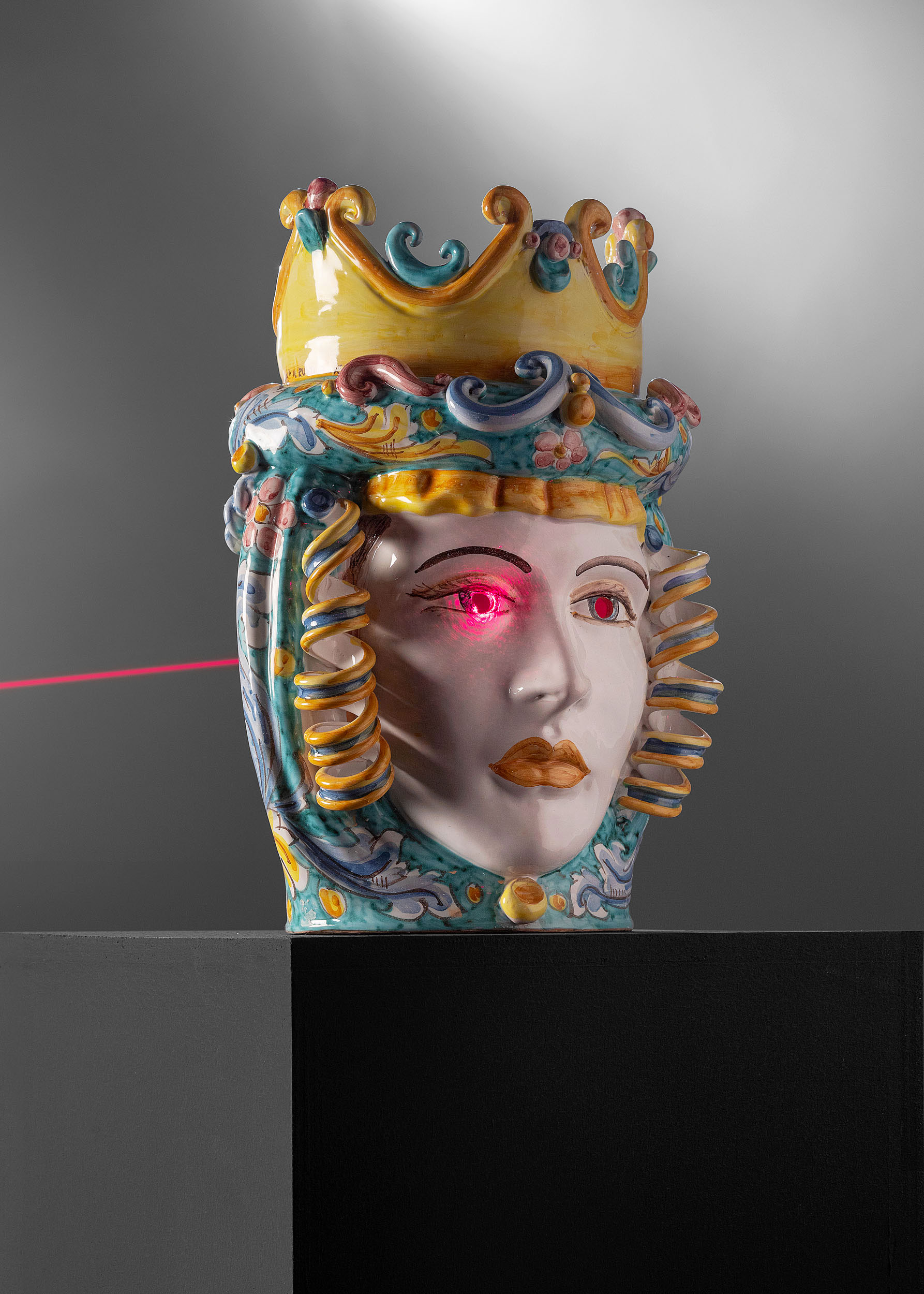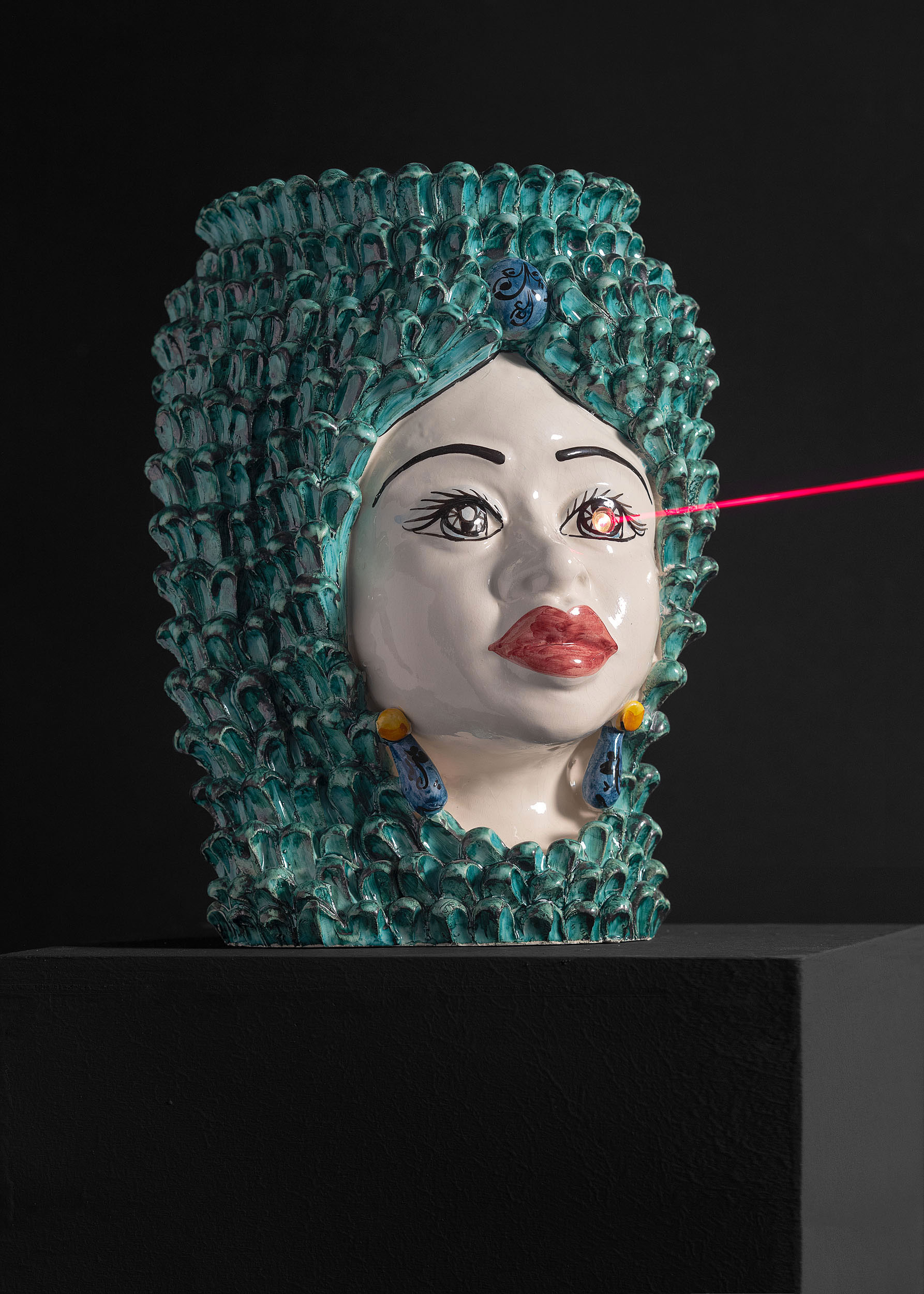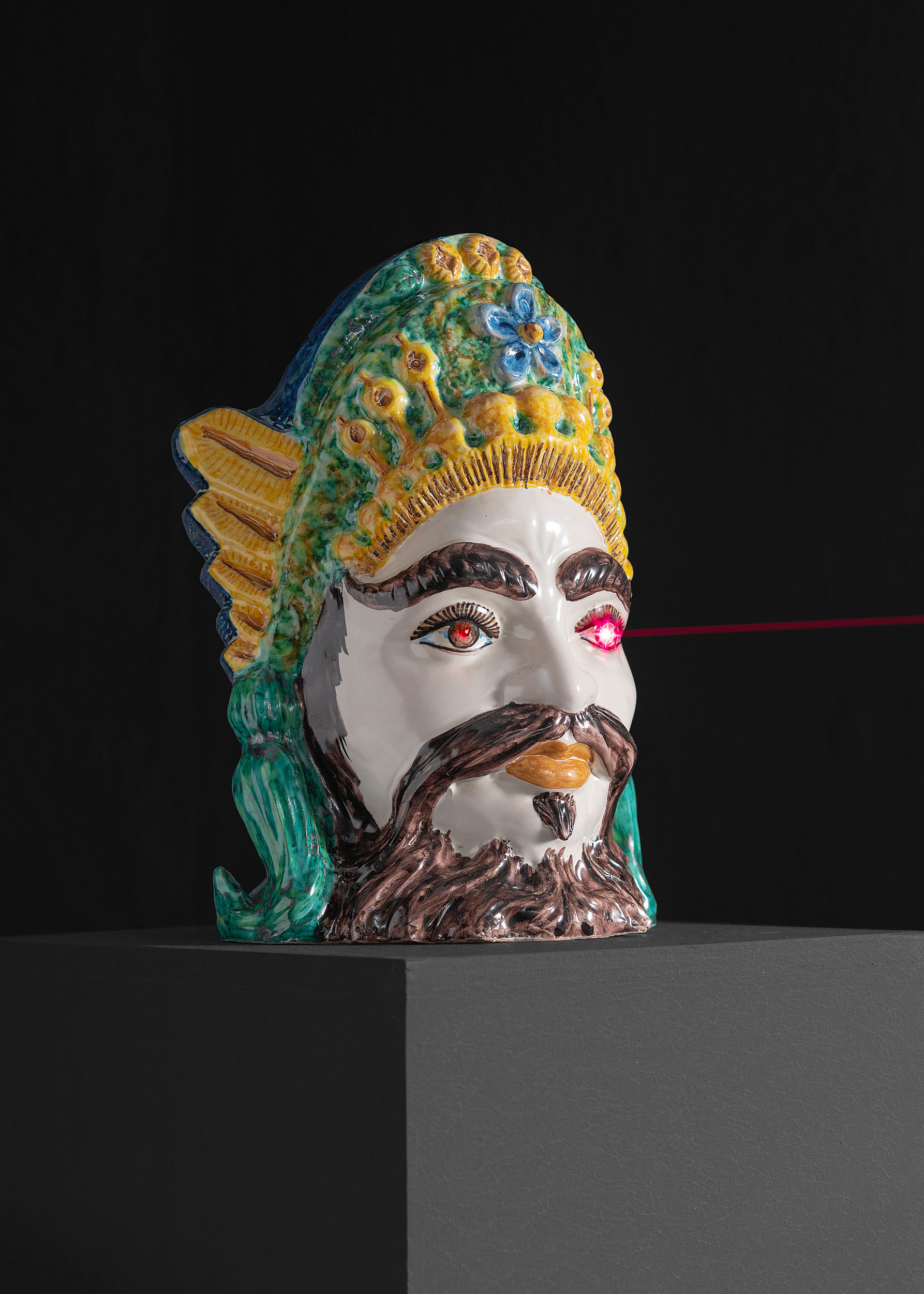Those are pearls that were his eyes.
Nothing of him that doth fade
But doth suffer a sea-change
Into something rich and strange.
(W. Shakespeare, The Tempest)
In September 2012, when the renowned Italian designer duo Dolce & Gabbana presented their Spring/Summer 2013 collection in Milan, their use in women’s clothing and accessories of what was perceived by international audiences as blackamoor figurines caused extraordinary scandal. Particularly controversial were the earrings portraying highly stylized Moors’ heads dangling from the ears of a few dozen models, none of whom were black. Journalists, artists, bloggers, and fashionistas were up in arms, especially in England and the United States, nations historically sensitive to racial discourse and representation of the black body. The Guardian compared the blackamoor jewels to Aunt Jemima dolls, noting how hard it was “not to be appalled by the transparent exoticism in sending the only black faces down the runway in the form of earrings.” The feminist blog Jezebel branded the objects “Mammy earrings.”1 The Huffington Post affirmed that they reproduced “racially insensitive imagery” since the figures represented slavery, concluding “the design duo should have steered clear of anything that would profit from slave culture.”2 American hip hop artist Azealia Banks harshly commented on what she defined a racist collection, tweeting to the world that she would boycott Dolce & Gabbana. The magazine Refinery29.com described the collection as resting heavily “on the laurels of a long-lost colonial era, complete with all the cartoonish, debasing, subaltern imagery that would make even your politically incorrect Grandpa think twice.”3
Although the controversy is easily understandable—there were indeed black heads hanging from the models’ lobes on the Milan catwalk—there is a fair amount of historical inaccuracy revolving around these figurines. As Dolce & Gabbana explained in their runway press release and in their own self-defined “luxury magazine online” Swide, their earrings reference the Moor’s head vases of Sicilian tradition, just as the rest of the collection portrays images from Sicilian folklore, like the highly decorated wheels of traditional carts and the puppets from Opera dei pupi. Behind all this, Elisa Della Barba explained on Swide, there is an ancient history and a specific legend.4
The notorious earrings reproduce the Moor head-shaped ceramic vases that have long decorated many Sicilian homes and can be easily found in souvenir shops all over the island—which happens to be the birthplace of Domenico Dolce, one half of the fashion brand. Specifically, the Moors represented on the vases cover a vast chromatic range: some are pitch black, others are white, off-white, or brown; all have Moorish facial features. To be sure, even the color variety was imitated in Dolce & Gabbana’s earrings. But the pictures that surfaced on the Internet and in the main press outlets on the occasion of the fashion show were those of the black heads—what the English-speaking world refers to as “blackamoors”, emphasizing blackness, in contrast to the most common Italian definition Mori, “Moors.”

Whether the original vases, and by analogy the Moors’ heads in the Dolce & Gabbana earrings, independently of the color, display exoticism perpetuating “racially insensitive imagery” is an intriguing and still largely overlooked subject of aesthetic inquiry. Indeed, some appear realistic, while others portray grotesquely stereotyped Moorish features. What remains certain, however, is that the history inscribed in the traditional vases that apparently inspired Dolce & Gabbana does not refer to early modern conceptions of either slavery or Western colonialism. In fact, in contrast to their Northern counterpart—namely, the blackamoor statuettes from the Venetian and Florentine traditions portraying servants of African descent—the Sicilian Moors’ head ceramic vases refer to an older, pre-modern specific moment of history: the Arab domination of Sicily, widely acknowledged as the zenith of splendor for the island. In particular, they reference a Sicilian folktale, which, according to legend, dates back to the year 1000 AD. In order to contextualize the tale, it is necessary to go back to its historical background, through a brief flashback in Italian history.
Italy today is considered a Western country. It is part of the European Union, of the original G7—now G20—and a member state of NATO. In the contemporary discourse, it belongs to the North and the West of the world, as opposed to the Global South and the Orient. It is the country where, in the past years, a large number of migrants have landed from the four corners of the world, especially from Africa, in search of better life conditions. However, until the country was unified in one nation-state, in 1861, the territory comprising the peninsula and the two major islands of Sardinia and Sicily that today we call Italy was an ensemble of small independent states, including the Papal States, more often than not at war with one another. Sicily, geographically and culturally strategic, was one of those small states. Located at the center of the Mediterranean, the island was a magnet for conquerors across the centuries.
Arriving from present-day Tunisia, the Arabs conquered Sicily in 827 and remained in power for some two hundred and fifty years. In fact, the new conquerors were not usually addressed as Arabs, but instead as Moors. The “notoriously indeterminate” term “Moor” was adopted, more generally, by the Europeans to refer to both the Amazigh and Arabs from North Africa, often extending to peoples from other African countries, from what today we call the Middle East, and even places as far away as India.5 The term did not imply a single culturally, ethnically, or racially bounded identity. It referred to dark-skinned people as well as to white people. Although habitually used as a synonym for Muslim, “Moor” actually transcended religious boundaries, encompassing a number of histories, geographies, and ideologies, all with their own cultural markers. Most importantly, the expression, coined by the Europeans to refer to the “other” who came from and through the Mediterranean basin, represented the intersection of European and non-European cultures.6
The Moors brought citrus cultivation, irrigation systems, sumptuous architecture, algebra, the Koran, majolica, and a rich culinary tradition to Sicily. The Sicilian pastry items known all over the world—cannoli, cassata, marzipan—date back to the Arab domination, which lasted unopposed until the Norman conquest in 1071. Until then, Sicily was an Arab emirate, and Palermo was its capital city. The Moors were not slaves, but conquerors. To use a modern terminology, they were not the subaltern, but the ruling class; not the colonial subjects, but the colonizers. They were the sovereigns, as the unfailing crown on the decorative heads makes clear.

The legend inscribed in the vases date back to the times of the Arab domination in Sicily. Art and legend have intertwined to the point that it becomes impossible to distinguish whether it was the legend that inspired art or, vice versa, the artifacts that prompted the legend. However, the story tells that in the year 1000, in the heart of the Kalsa, one of the Arab quarters of Palermo, lived a beautiful Sicilian young lady who spent her days cultivating plants and flowers on her terrace. Well-to-do young women were not allowed to go out on their own at those times, and occasion of social encounters were mediated by parents. But since the woman gardened on her balcony, her beauty was known to her neighbors, who said that her hair was as dark as the night and her eyes as blue as the sea in Palermo bay. One day, a young Moor who lived nearby was passing by and, mesmerized by the lush vegetation on the terrace, he took a glimpse and saw, among the flowers, the beautiful young lady. It was love at first sight. He approached, asked to be received, and declared his eternal love to her. Moved by his sweet words and the purity of his sentiments, she reciprocated. The love story continued passionately, until one day, some time later, the Moor told the woman that he was to leave Palermo to go back to his country, where his wife and children were waiting for him. The young woman, unaware that her beloved had a family in his original homeland, was heartbroken. Incensed by betrayal and dishonor, she planned a vendetta in consummate Medieval Sicilian style. She invited her lover over to spend their last night together, and when he finally fell asleep, she chopped off his head. In this way, her beloved would remain with her forever, as he had promised. And what better way to preserve his head than transforming it into a vase where to plant basil, the royal herb, as fitted the now beheaded conqueror? The plant in the man’s head joined the others in the terrace, soon growing so lush and fragrant that the jealous neighbors had some ceramists in town make majolica vases shaped just like that—like the Moor’s head.
Soon enough, in the ceramic tradition, the heads became two, one male and one female, representing the two lovers, and even today they are displayed in pairs in Sicilian homes. The male and female heads, usually exhibited one next to the other, are equally adorned with jewelry, ornamental fruit, boughs, wreaths of flowers and leaves, and sometimes turbans, in the typical bright colors of Sicilian tin-glazed majolica such as cobalt blue, antimony yellow, and copper green. With or without turbans, both heads are always crowned. The faces, regardless of the nuance of the complexion, share similar features, such as marked eyebrows and more or less plump lips. The man always flaunts a virile moustache and occasionally a goatee, whereas the woman is sometimes portrayed with blue eyes. Chromatically, however, the skin matches in every pair of Moors’ heads: they may be light or dark skinned, but always equally so, symbolizing perennial communion and a shared destiny. The two vases, while dramatically staging an unhappily ending love story, represent the encounter of man and woman, the Orient and the West, the South and the North, Muslim and Christian, conqueror and conquered. It is no coincidence that this encounter symbolically takes place in the decorative arts of Sicily, a crucial Mediterranean crossroad across the centuries.

Slightly different versions of this story are spread all over the island, but the end always remains the same: the Moor is decapitated by the devoted, betrayed Sicilian woman, and his head becomes a blooming basil pot. The story is remarkable not only for its dramatic sequence and macabre theme, a combustion of love and death typical of the most consummate Sicilian style, but also because of the role played by the female protagonist: the seduced native woman takes agency and, acting upon her urge for revenge, suppresses the Moor who conquered her land as well as her heart. In many ways, this powerful Sicilian folktale is the exact opposite of the story of the most popular Moor in European letters, Othello, the Moor of Venice, who, blind with jealousy, kills the candid, innocent Desdemona. While Desdemona is a passive recipient of Othello’s wrongs, the Sicilian heroine takes action against her lover’s treacheries. There are good reasons to believe that the folktale might also have been the main source for Boccaccio’s famous Lisabetta da Messina’s novella in The Decameron, where the protagonist plants in her dead lover’s head a basil plant which her tears grow strong and scented, until her brothers, responsible for the assassination, take it away, thus causing their sister’s death.
Regardless of its literary echoes, this legend inspires the tradition of the ceramic Moor’s heads, whether it antecedes their production, as is commonly believed, or follows it, as some artists critically affirm. The exchange between the legend and the decorative art tradition has appealed to artists and artisans across the years, who have re-signified the vases in new fashions. In recent years, for example, after a great number of “Moors” of all skin shades have arrived in Sicily through the Mediterranean Passage, some vases have assumed facial features characteristic, in the Western imagination, of people from what the West calls the Sub-Saharan African regions. More often than not, they are caricature-like features, inscribed in the century-old Western tradition of black bodies representation, the same that the detractors of Dolce & Gabbana’s 2013 collection harshly criticize. On the other hand, some artists have engaged with the Moors’ heads by interrogating their presence, their history, their gaze. Those proposed by Invernomuto look at the future − and in some cases at each other − with intense laser eyes. Their beaming gaze is inquisitive, timeless, prophetic. It intersect ours, and we all identify in the beheaded Moor’s head as well as in that of the beheader.

